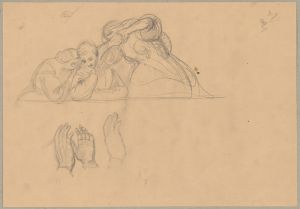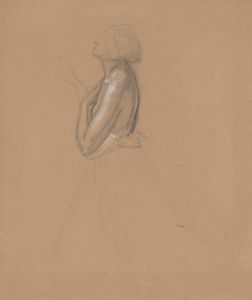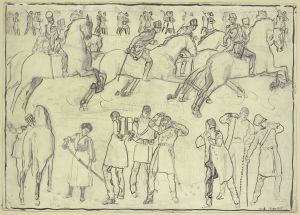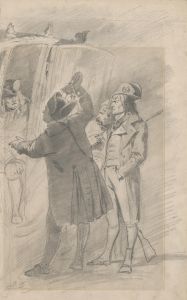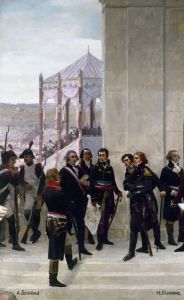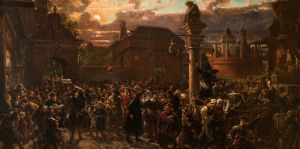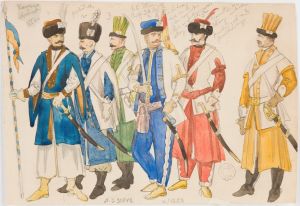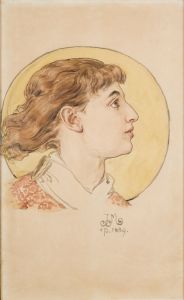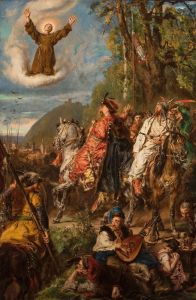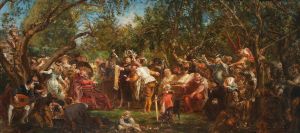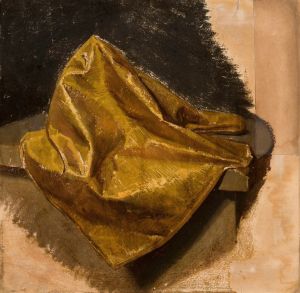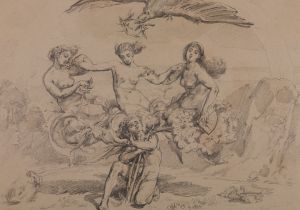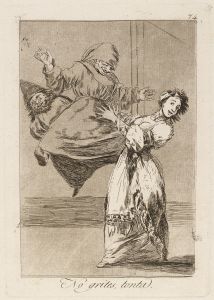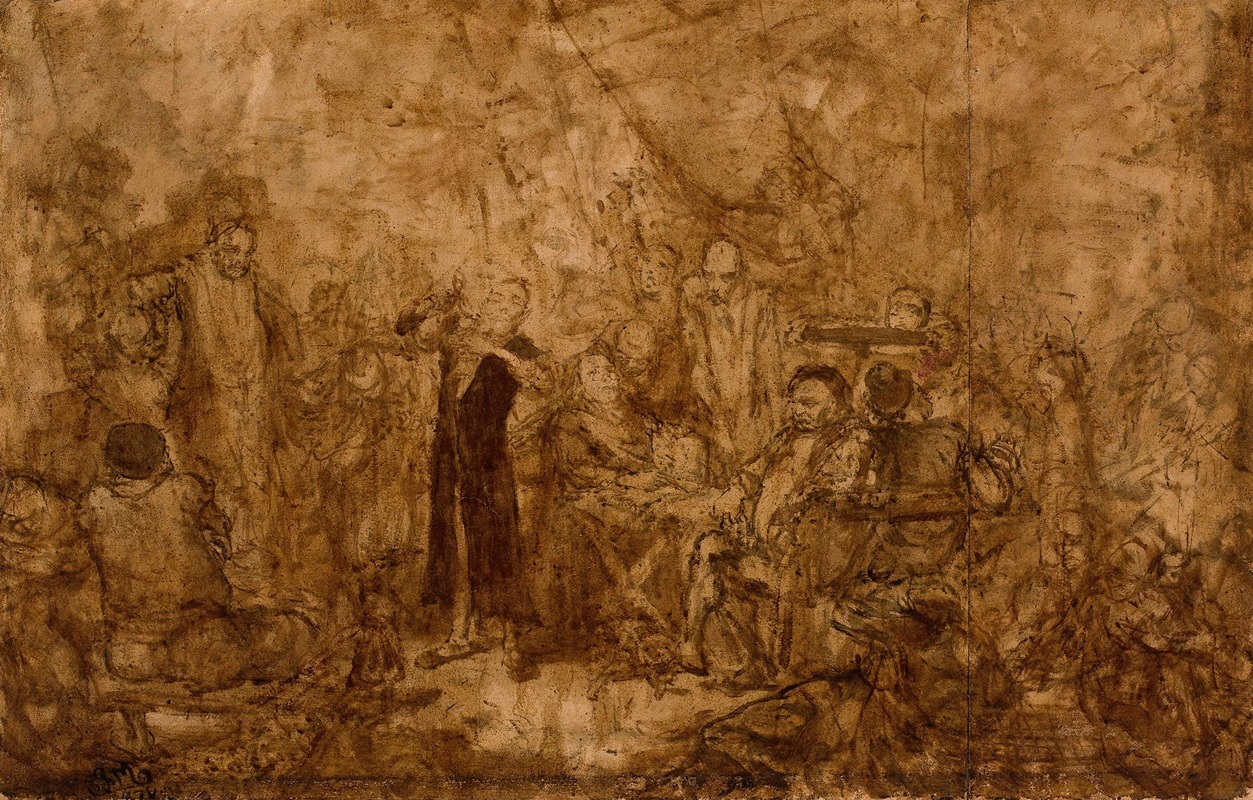
The Babin Republic, sketch
A hand-painted replica of Jan Matejko’s masterpiece The Babin Republic, sketch, meticulously crafted by professional artists to capture the true essence of the original. Each piece is created with museum-quality canvas and rare mineral pigments, carefully painted by experienced artists with delicate brushstrokes and rich, layered colors to perfectly recreate the texture of the original artwork. Unlike machine-printed reproductions, this hand-painted version brings the painting to life, infused with the artist’s emotions and skill in every stroke. Whether for personal collection or home decoration, it instantly elevates the artistic atmosphere of any space.
"The Babin Republic" is a sketch created by the renowned Polish painter Jan Matejko. Matejko, born in 1838 and passing in 1893, is celebrated for his historical paintings that vividly depict significant events and figures in Polish history. His works are known for their attention to detail and historical accuracy, often serving as visual narratives of Poland's past.
The sketch "The Babin Republic" refers to a satirical society that existed in the 16th century in Poland. The Babin Republic, or "Rzeczpospolita Babińska" in Polish, was a mock republic established by Polish nobles and intellectuals. It was founded in the village of Babin, near Lublin, and served as a parody of the political and social structures of the time. The society was known for its humorous take on the political life of the Polish-Lithuanian Commonwealth, often mocking the inefficiencies and absurdities of the nobility and the government.
Matejko's sketch captures the essence of this satirical society by illustrating its members and their activities. The Babin Republic was characterized by its own set of mock officials, including a king, senators, and other dignitaries, all of whom were elected in jest. The society held regular meetings where they would engage in humorous debates, issue fictitious decrees, and conduct mock trials. These activities were designed to entertain and provide a critical commentary on the political climate of the time.
The sketch by Matejko likely reflects the lively and comedic atmosphere of the Babin Republic. Although the specific details of the sketch are not widely documented, it can be inferred that Matejko's work would include elements of satire and caricature, given the nature of the subject. His ability to convey complex historical and social themes through art would have been well-suited to capturing the spirit of the Babin Republic.
Matejko's interest in Polish history and his dedication to portraying it through his art make "The Babin Republic" an important piece in understanding both the artist's oeuvre and the cultural history of Poland. While the sketch itself may not be as famous as some of Matejko's larger works, such as "The Battle of Grunwald" or "The Prussian Homage," it nonetheless contributes to the rich tapestry of historical narratives that Matejko sought to preserve and share through his art.
In summary, "The Babin Republic" by Jan Matejko is a sketch that reflects the humorous and satirical nature of a 16th-century Polish society that parodied the political and social structures of its time. Through this work, Matejko continues his legacy of using art to explore and comment on the historical and cultural identity of Poland.





